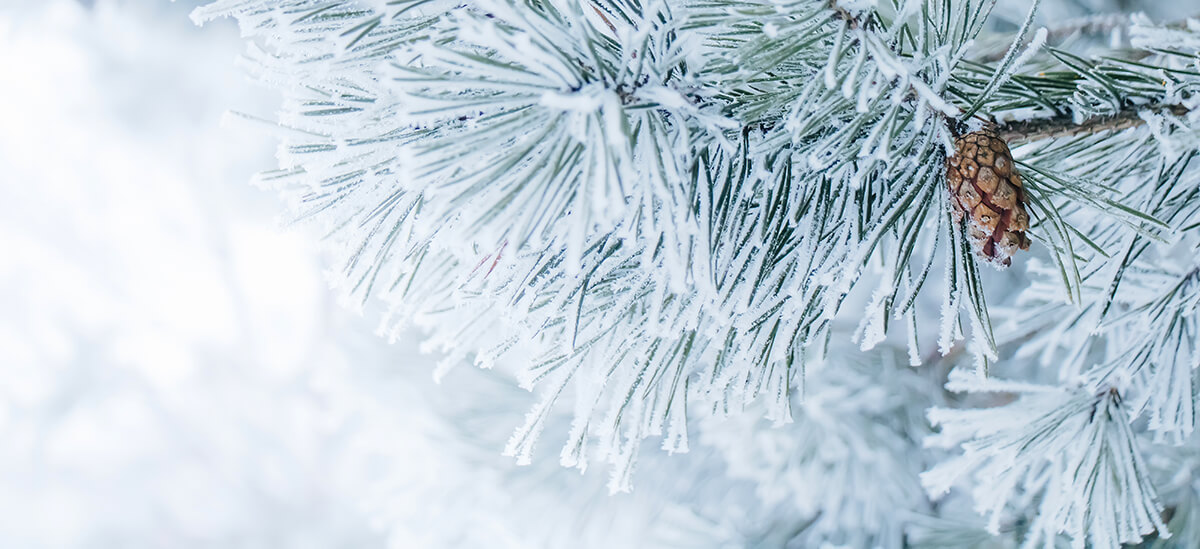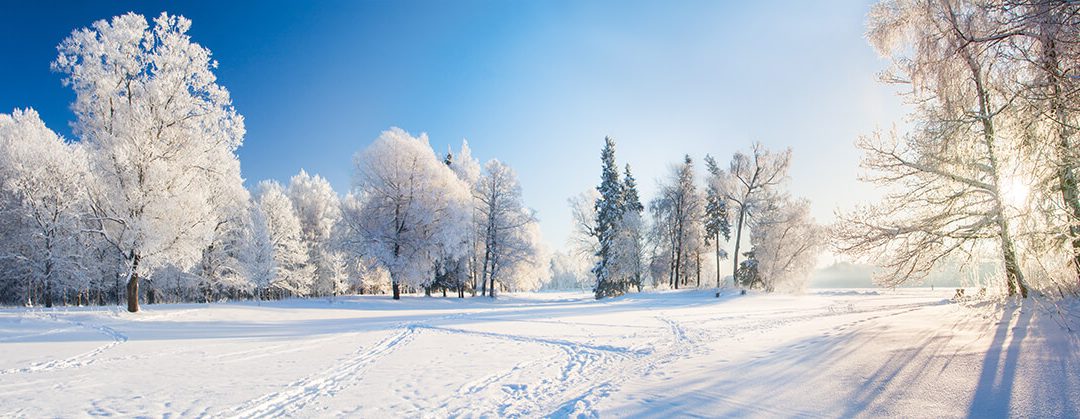Trees have several adaptations to survive in winter when temperatures drop. In the fall, they prepare for dormancy, when their metabolism (internal process) slows down to save energy consumption. Tree bark for both deciduous and coniferous trees protect them against inclement weather because of its tough material and air spaces that work like insulation for the inner layers. Deciduous trees lose their leaves pre-season (abscission), but the long waxy needles of coniferous trees have a small surface area that prevent transpiration, or water loss. During the winter, tree roots can’t pull up liquid water because the ground is frozen, so this is an important process that protects leaves from damage. Narrow needles also keep snow from piling up, where weight can break branches. There’s a little pocket of still air inside the needle and they have waxy cuticles, the outermost part of a leaf, to prevent dehydration. Interestingly, in trees, ice can form around ice nucleators, or, certain types of molecules. They produce proteins and send them in between cells to draw water out of the cell. They also have antifreeze proteins that help prevent ice crystals from forming in negative zero temperatures.
We focus on cultivating safe, functional green spaces as we work with private homeowners, land developers, agricultural investors and municipalities throughout southwest BC. If you are unsure about the condition of the trees on your property, give us a ring for a customized quote and on-site consultation. We’ll assess the health of your trees and make recommendations for pruning, insect and disease control or crowning. We have a 60’ bucket truck to reach high branches and our utility arborists are trained to work around power lines.

Municipal and commercial queries are welcome. We have full WCB coverage and over 40 years of experience in our industry. Our certified utility arborists maximize the safety of parks, roadways and commercial settings.
Read about our tree and landscaping services: SERVICES.

